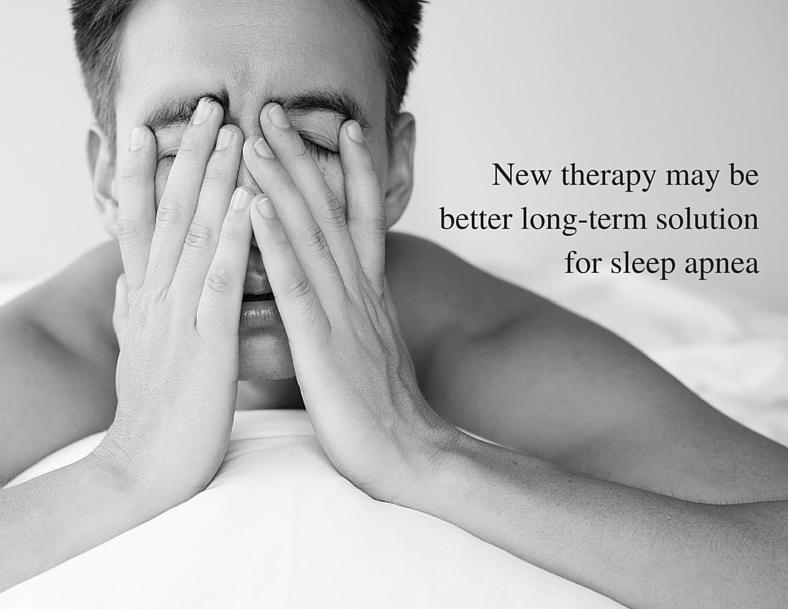You wake in the morning with a dry mouth, a sore throat, or a congested nose. Often, you don’t feel like you’ve slept much at all, and you find it hard to stay awake throughout the day.
If this describes you, congratulations: You may fall within the 10 percent of the middle-aged adult population with sleep apnea. This serious sleep disorder affects 42 million American adults in which breathing regularly stops and starts throughout the night.
According to the National Sleep Foundation, men are more than twice as likely to suffer from the condition as their female counterparts as the number of diagnosed cases continues to rise.
Sleep apnea has a few causes, ranging from a structural problem with relaxed throat muscles and a narrowed breathing passage that limits nighttime breathing to a neurological problem in which the brain doesn’t send the correct signals to muscles that control respiration.
In any case, the result can be a restless sleep with even larger medical implications than a sleepy day. They include poor blood oxygenation and links to heart disease and diabetes.
Most cases can be alleviated by a change in lifestyle ““Smoking and being overweight are common factors. Still, others have found relief from the well-known CPAP (continuous positive airway pressure) device, a machine that delivers air pressure through a mask placed over your nose while you sleep, helping keep your airway open as you sleep.
While CPAP is becoming more common as a treatment, a significant number of patients fail to keep using the device because of discomfort with the mask. Some reports put the number as high as half of all CPAP users who fail to keep using the device as prescribed.
Therapy may offer a better solution to sleep apnea, though. Presented at a conference of the American Academy of Otolaryngology-Head and Neck Surgery Foundation, researchers from several universities reported strong success with an implanted device that stimulates nerves to keep airways open during the night.
Produced by Minnesota-based Inspire Medical Systems, the battery-operated Cranial Nerve Upper Airway Stimulation Device is implanted under the skin of the neck and chest. Patients activate it before bed via a remote control device, which uses electric stimulation to keep airways open during the night.
In an accompanying study presented at the conference, researchers said they followed 116 sleep apnea patients who were implanted with the device after CPAP failed. Three years later, treatment was effective for more than half, with reduced apnea-related problems. More than four out of five of the original group were still using the device.
“What we’ve seen is an almost normalization of their sleep problems, along with a very promising level of long-term adherence,” Dr. B. Tucker Woodson, a professor, and chief of sleep medicine at the Medical College of Wisconsin in Milwaukee, wrote in the study summary.
While the device may not be useful for all apnea sufferers, he added, it offered “significant promise” for a great many patients. Testing of the device is continuing with larger groups.


